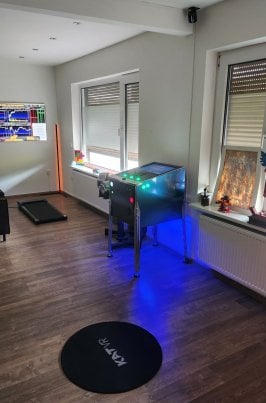Ah, so the Q3 video compression is absolutely 100% not a problem so long as you're very careful not to make things too difficult for it. Gotcha. Exactly as I thought. And exactly why it would always be nagging at the back of my mind whenever I was driving.
I don't think there's any magic that'll make compressed video over USB appear to be as solid as a native feed, but I guess it's just something I'll have to try for myself somehow.
Edit: I've been researching this USB video compression issue since the Quest 2 came out, and again with the Quest 3. The very best that people can say is that the compression isn't
too distracting, or that it's
acceptable, or that they only see it if they
look for it. None of that would work for me. I'd always be wondering (as I was with my short time with the Q2) why I've 'upgraded' from the CV1 to get sharper visuals that are then subject to blurring and pixellation and duller colours due to video compression. It just doesn't make sense.
And that's ignoring the added latency, the occasional hitching and the occasional flash of pure black frames that I was getting in the Q2. The CV1 is much lower-res, but it's a rock-solid performer over Display Port. The Q2 always felt like it was struggling to keep up with things, which in a sense it was.
No, I think that no matter how good people say the USB video feed is over USB with the Q3, it'll always be somewhat flaky compared to DP. And I'm sure there's quite a bit of subjective denial going on with some Q3 users as to how good it objectively really is, as if they're trying to convince themselves that the compromises are minimal.
Present company excepted, of course..!


 (I'm proud of it)
(I'm proud of it)